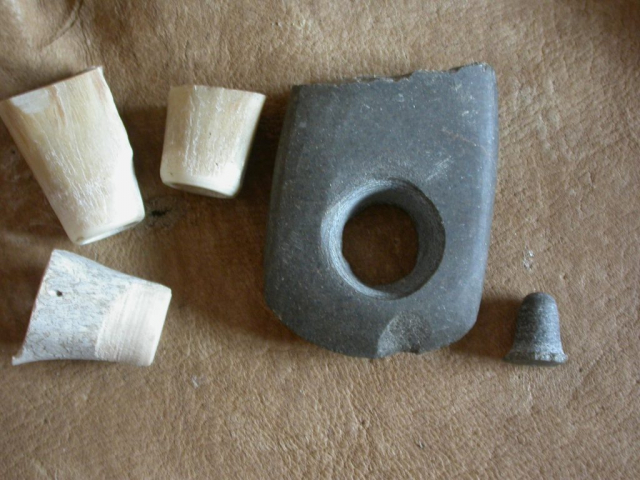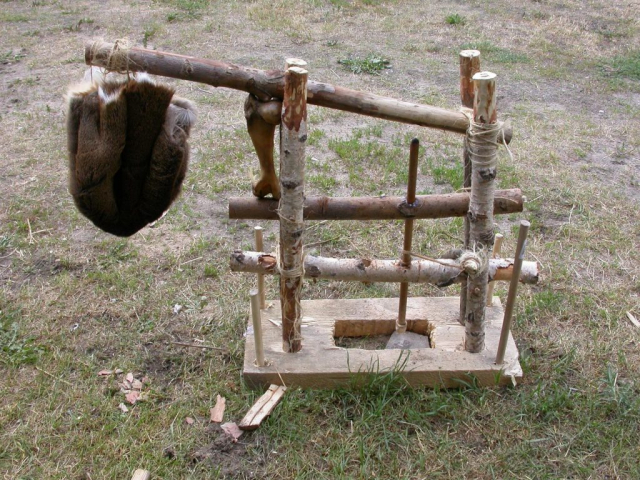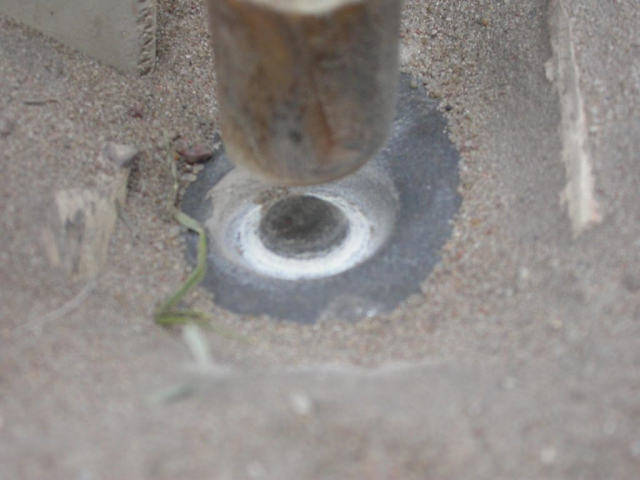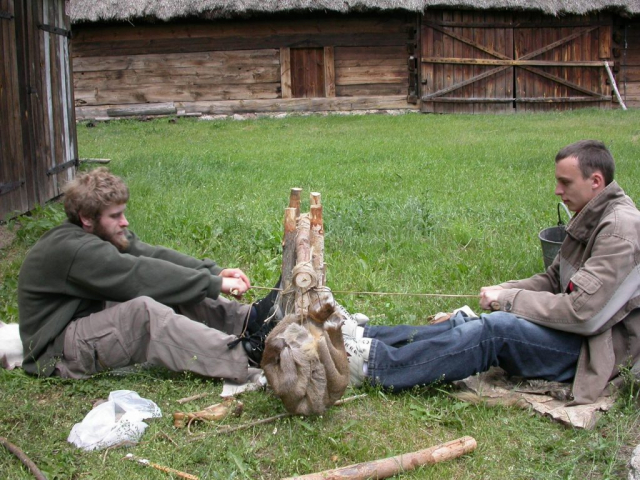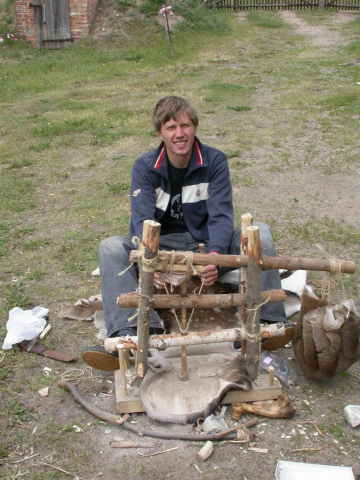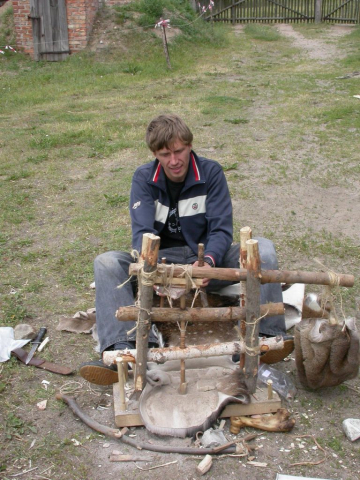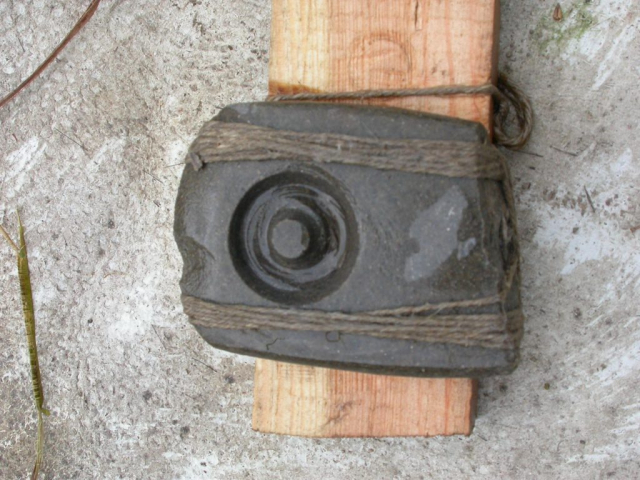Stone is one of the most important raw materials used in primeval times. Its significance in the studies on the reconstruction of life in this period is emphasized by the fact that most of the objects found by the archeologists at the sites of the period SEPA is interested in is made of it. Stone materials have different properties and have been used in a variety of activities. Thus, also experiments with stone objects are performed by the Society for Experimental Prehistoric Archaeology concern many aspects of life in the Stone Age. In the first place, one should mention the experiments with stone tools used for treatment of all organic and inorganic materials accessible in the primeval times. In the course of experiments with the help of stone tools we treat leather, meat, wood, bone and antlers, amber, shells, soft stones and ceramics. Flint arrowheads are used in experiments with throw weapons. From stone made are axes used for wood chopping, hoes used to acquire clay for ceramic vessels as well as various polishing tools and grinders. Most of the mentioned experiments is subordinated to traceological research.
Members of the Society for Experimental Prehistoric Archaeology conduct also experiments aiming at reconstruction of methods of stone treatment. Thus, performed are experiments with flint splitting and smoothing flint and stone objects. During a Circle’s camp which took place in spring 2004 conducted were first successful experiments with drilling holes in objects made of “hard” stones. Used was a reconstructed Neolithic driller and stone drills.



